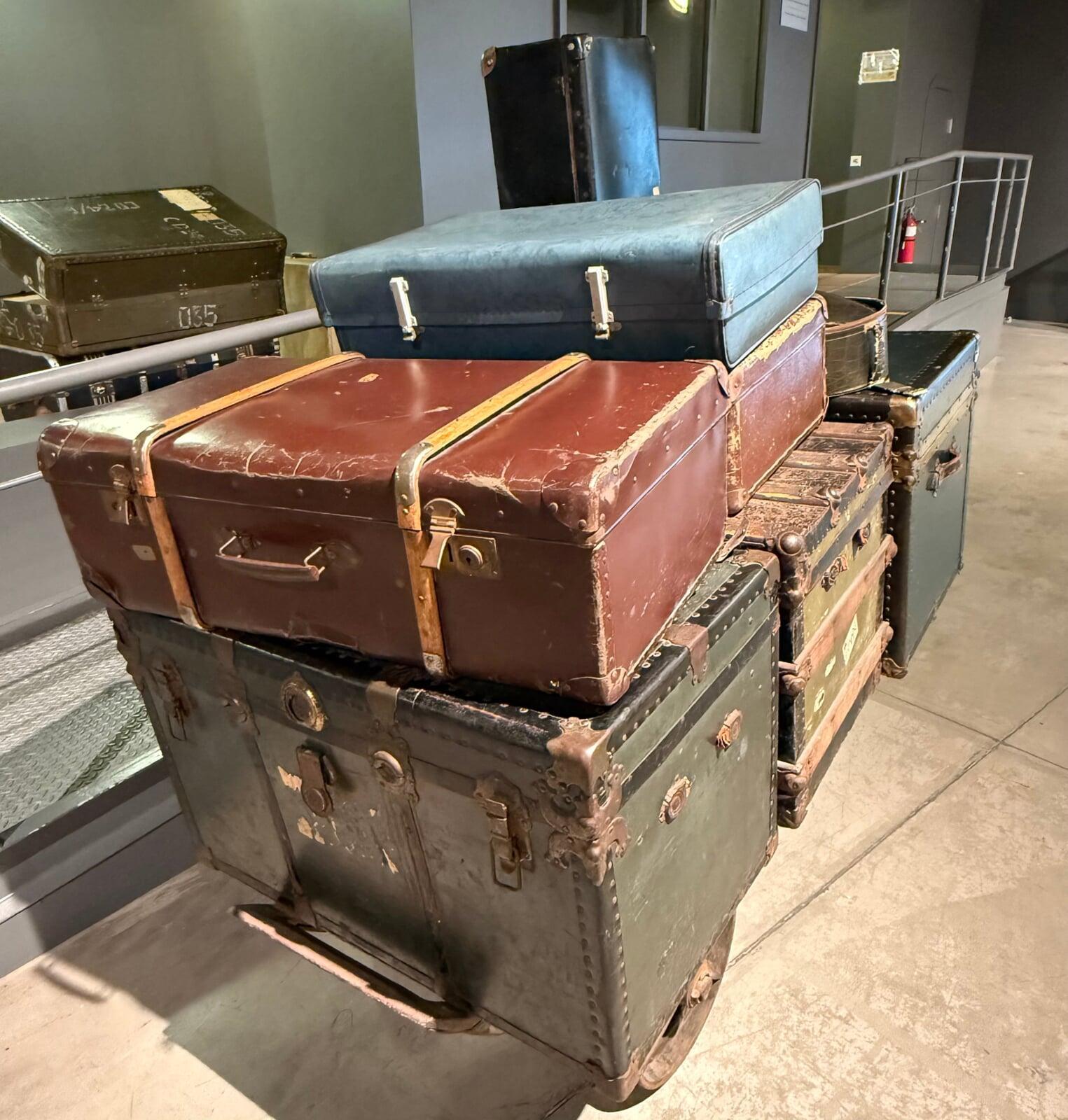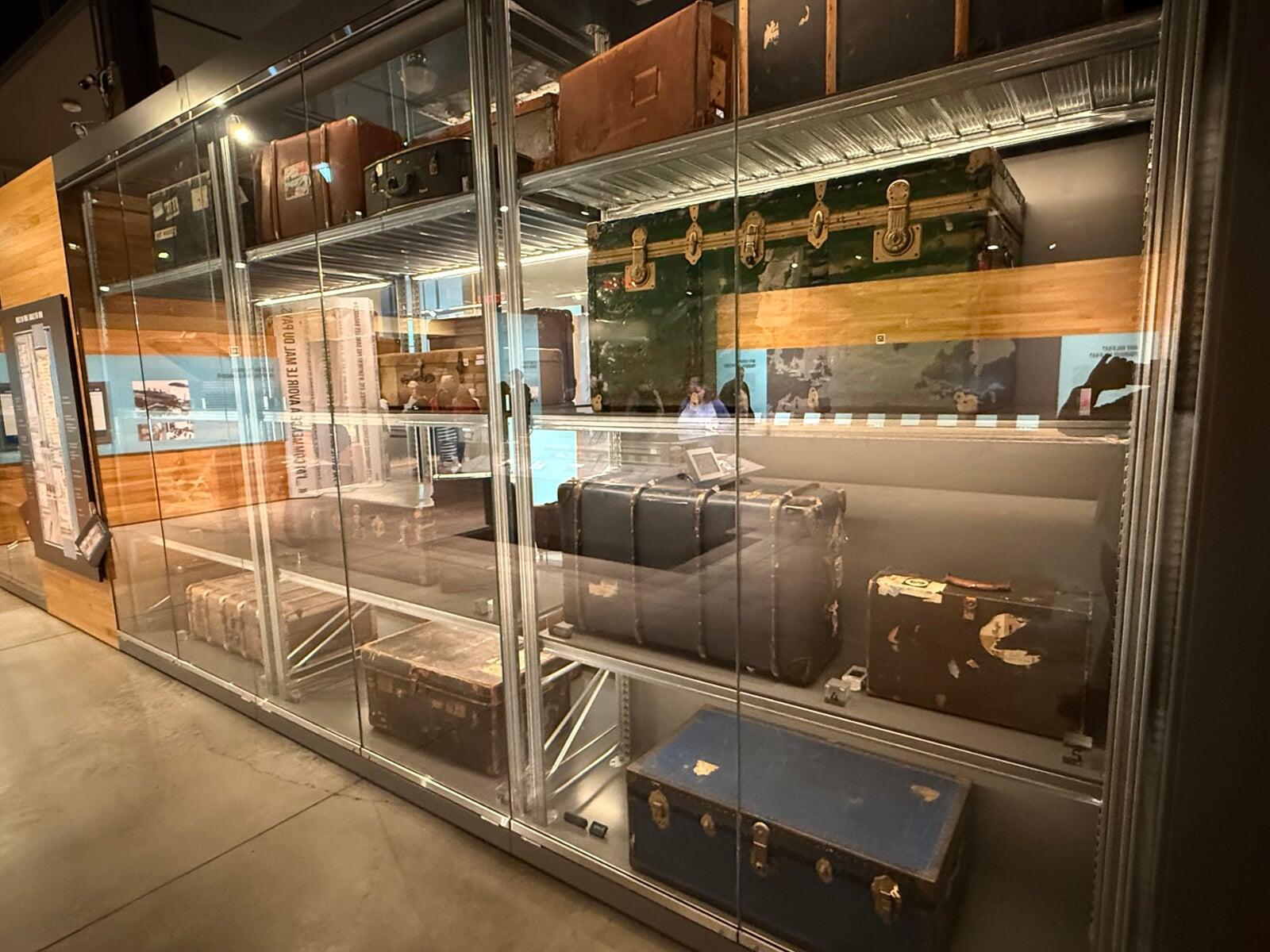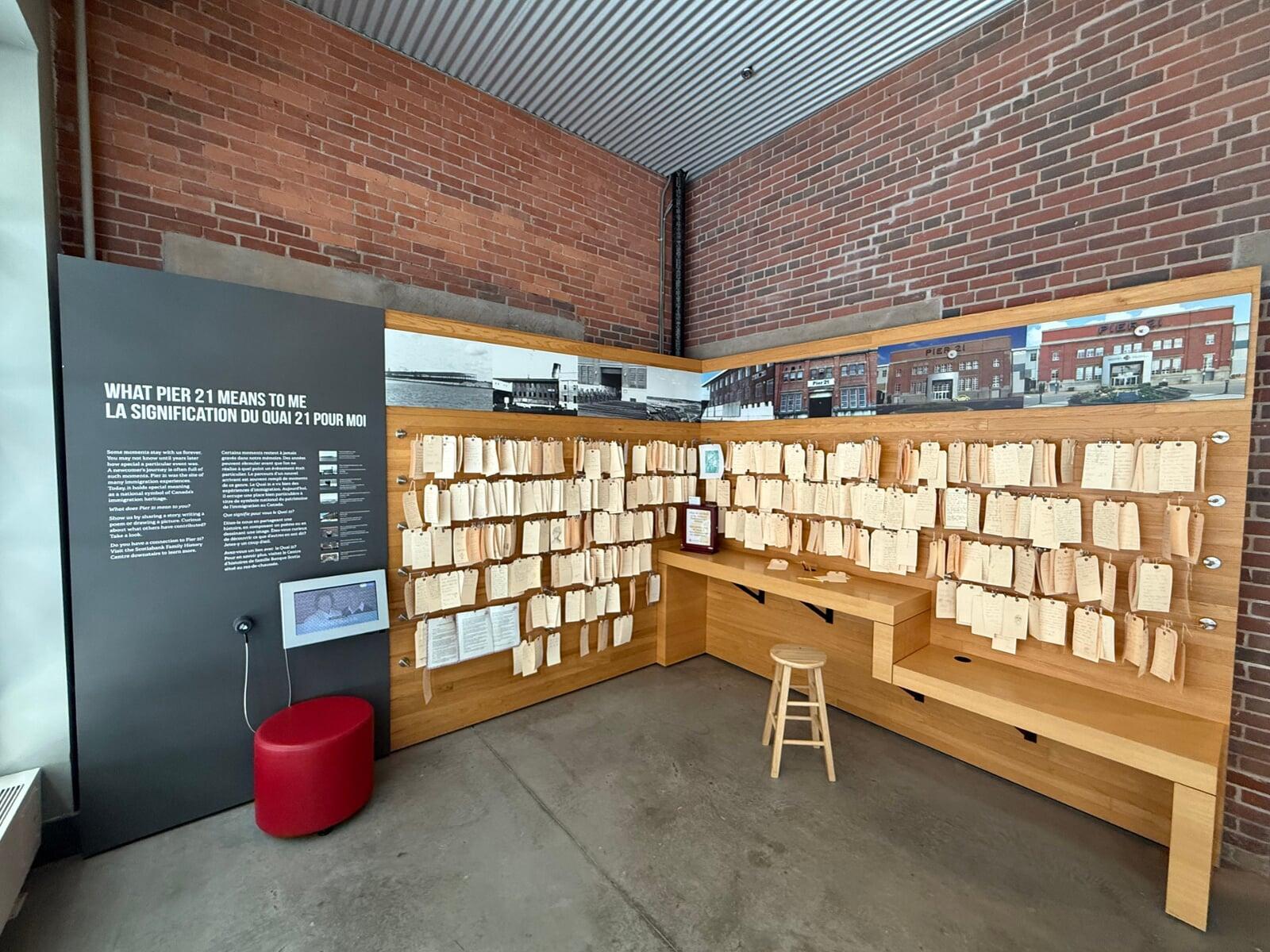
It’s a cooler mid-summer August morning and Diane and I find ourselves traveling in Nova Scotia, drawn by its breathtaking Atlantic coastline and rich seafaring culture. Canada’s Atlantic provinces are beautifully rugged, with deep-rooted traditions waiting to be discovered. Though our TourMagination travel offerings typically take you further afield, we are also thinking about crafting some unique experiences closer to “home.”
A line that stays with us is shared by our museum guide at the Pier 21 Museum in Halifax: “Every suitcase tells a story.” It lingers in our minds as we wander through the halls, absorbing stories of the waves of immigrants who pass through Canada’s historic seaport, including Pier 21.
Pier 21 opened in 1928 and served as a bustling immigration terminal until 1971. During those 43 years, nearly one million immigrants enter Canada through its doors. The museum now draws meaningful parallels with Ellis Island in New York—both former gateways of hope serving the U.S. and Canada.
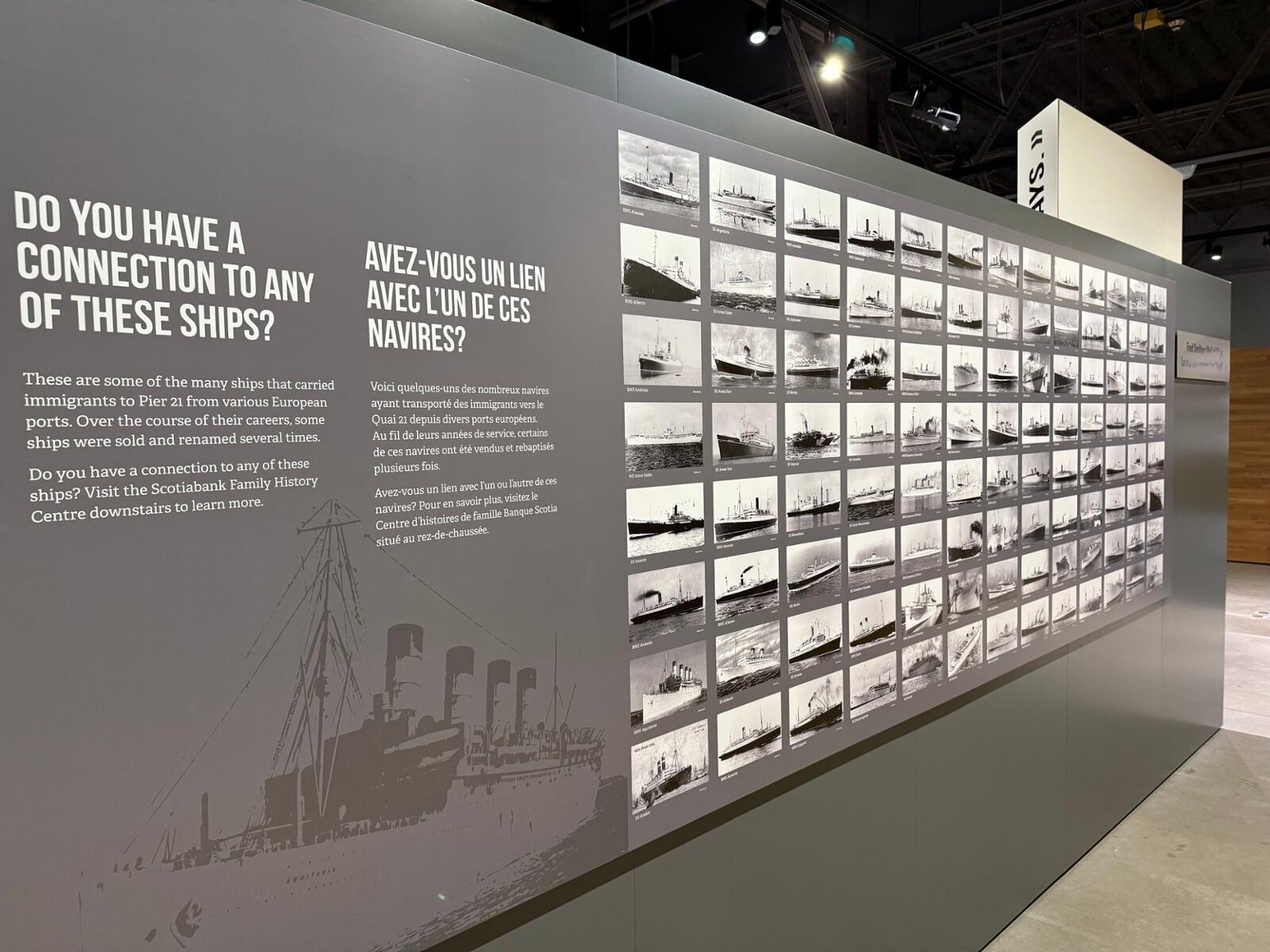
As we walk through the exhibits, we are struck by the display of suitcases—from regal wardrobe chests to a modest worn cases that might have held everything someone owned before a new start. Many stories center on immigrants’ hopes to build brighter futures for their children—stories of deep sacrifice and determination. These are journeys not just across water, but toward opportunity and belonging.
One exhibit wall in the museum displays names and images of ships that ferried thousands across the Atlantic. It invites visitors to ask, “Do you have a connection to any of these ships?” We recognize names our own families traveled on—Empress of Scotland, Melita, Volendam—and very likely some that carried members of your families as well. Each name represents countless stories of fear, relief, courage, and new beginnings.
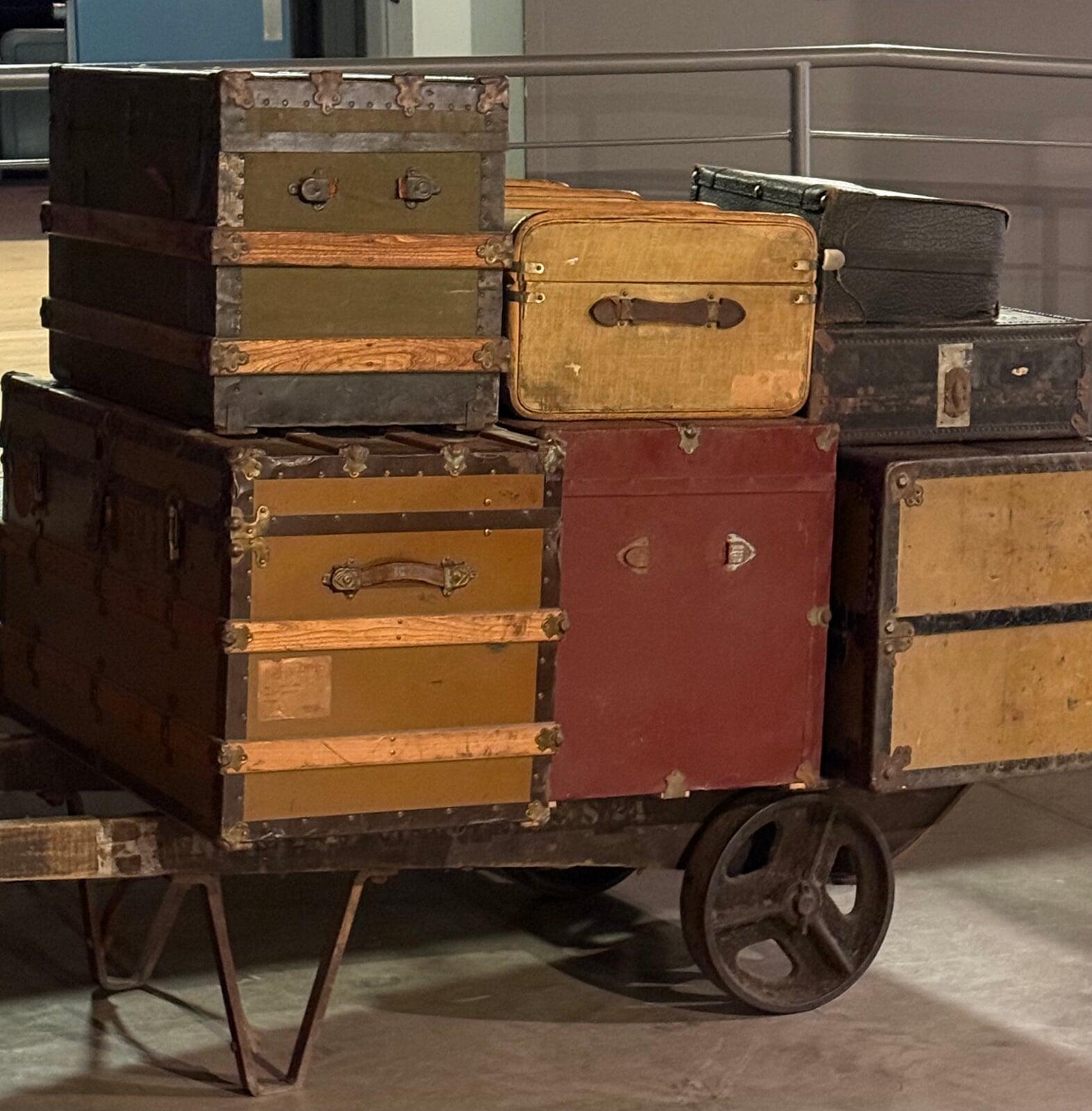
The Family History Centre gives us a chance to dig deeper. We look up passenger manifests, discover ports of arrival, and follow their settlement paths. Seeing our great-grandparents’ signatures on the immigration records is deeply moving—imagining what their suitcases must have held.
We leave Pier 21 with gratitude: for the trials our ancestors endured for the good of their families, for the communities they built, and for the pieces of our story that still is to unfold. After all, we are all immigrants—whether as recent arrivals or descendants—and every suitcase tells a story.

